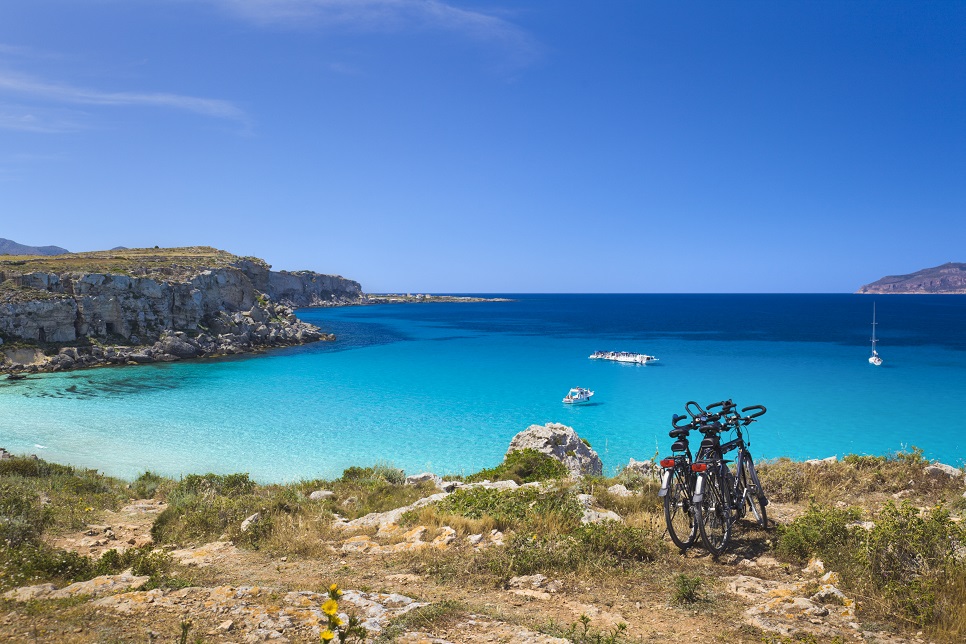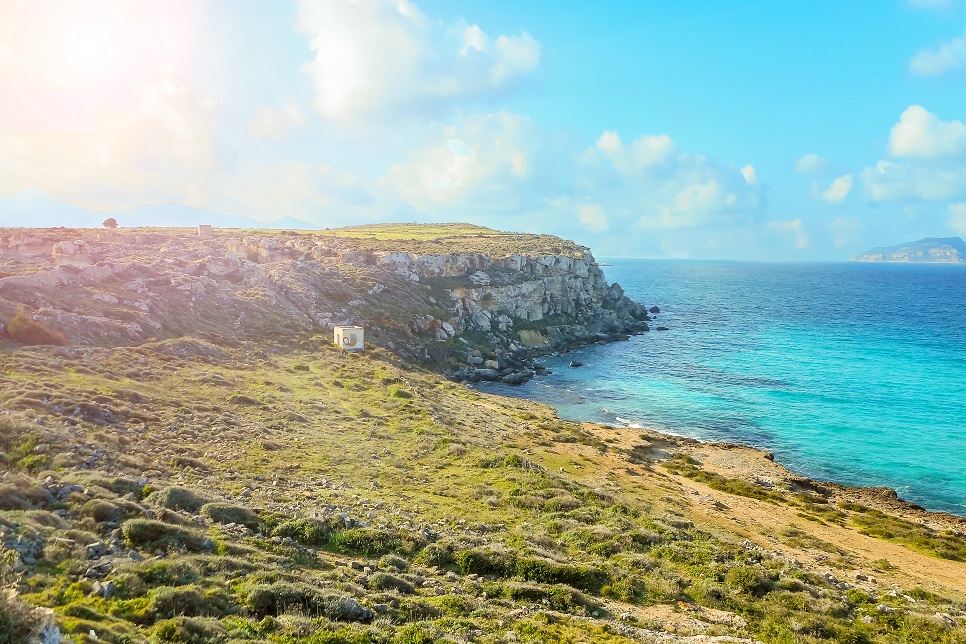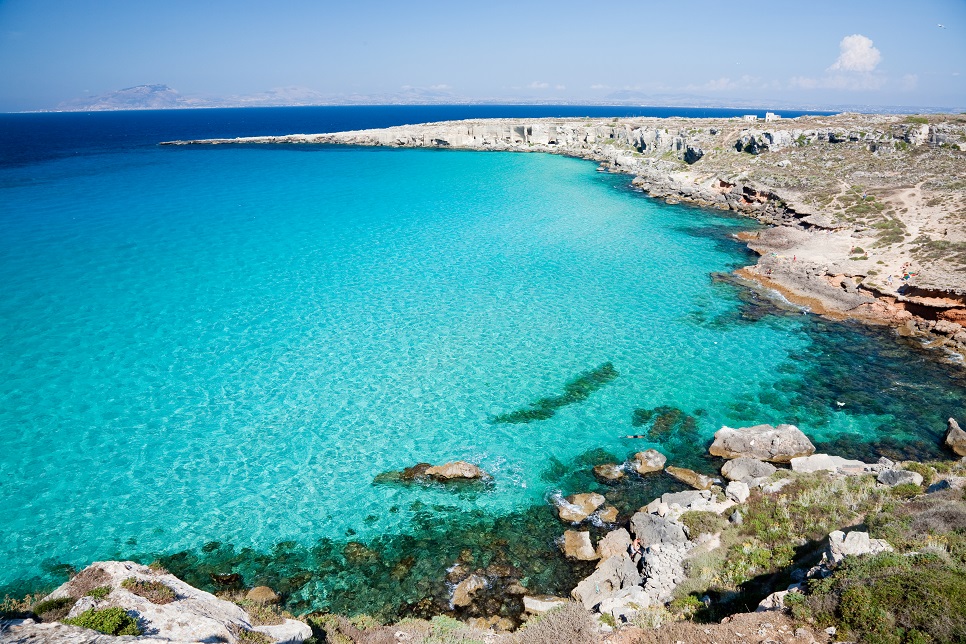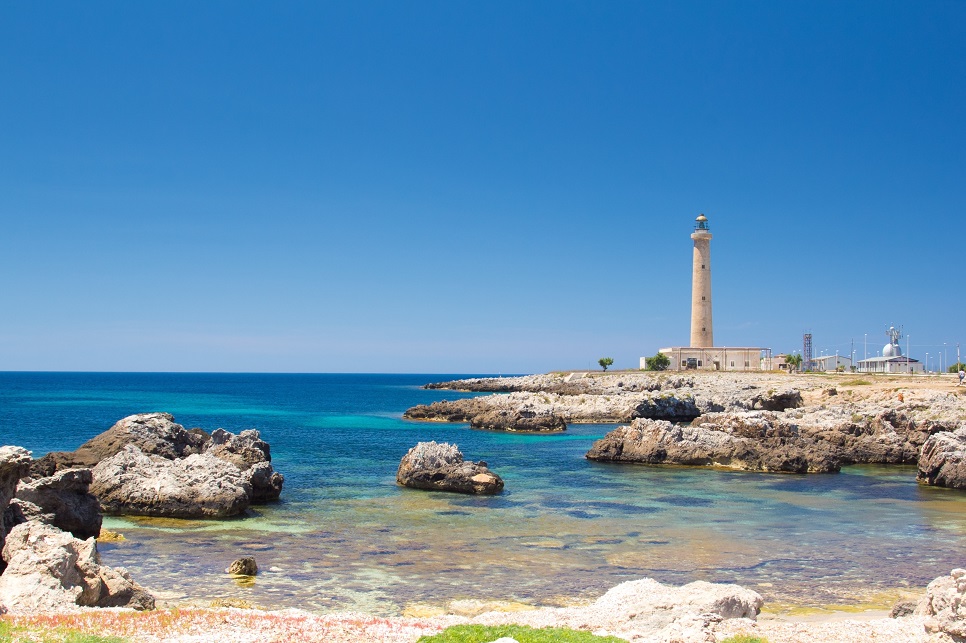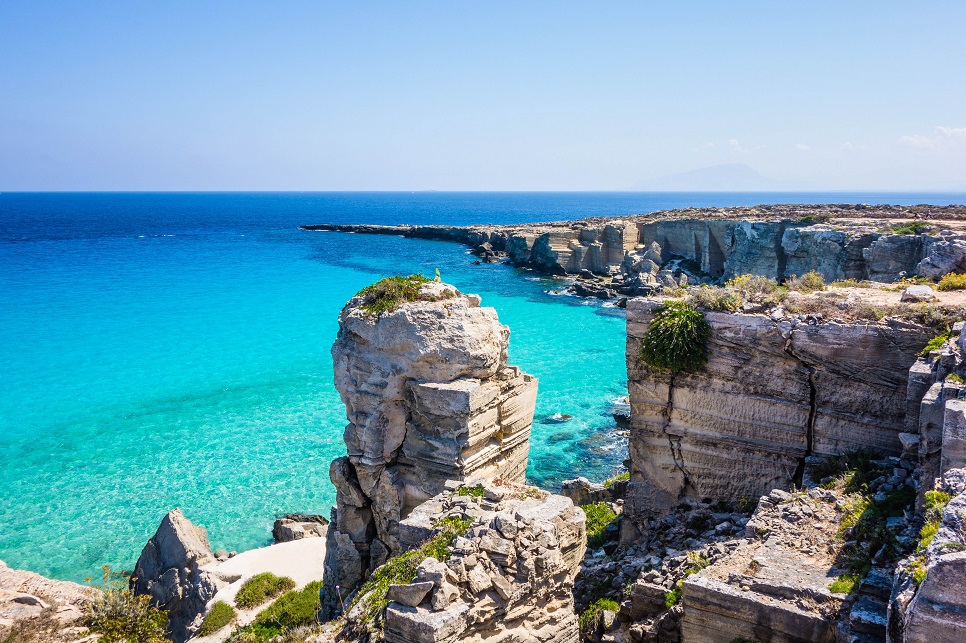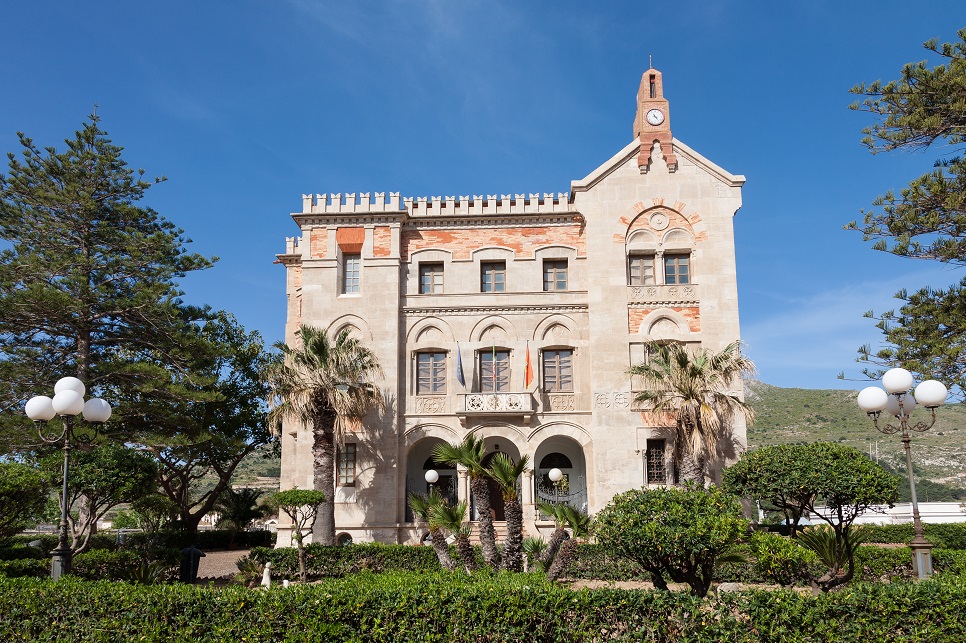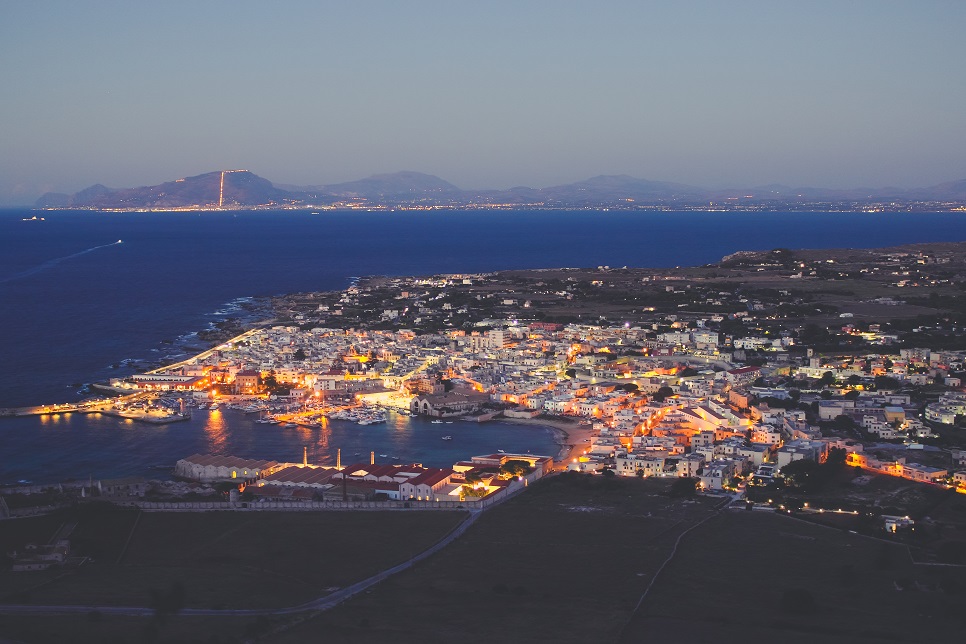Butterfly-shaped Favignana is fringed with beautiful bays, rocky outcrops and fabulously clear water which makes it a popular spot with swimmers and diving enthusiasts who are attracted by the sea caves. Bearing hopelessly romantic names - the Lovers’ Grotto (Grotta degli Innamorati), the Blue Grotto (Grotta Azzurra) and the Grotto of Sighs (Grotta dei Sospiri), some of the caves were inhabited right up to the 18th century and also bear inscriptions that date back to Palaeolithic times.
The coastline is made up of rocky shores, caves and small coves which are lovely for swimming and snorkelling. Cala Rossa is one of the island’s most attractive and best-known bays although slightly less accessible than Lido Burrone which, with a bar and other facilities, is more suitable for families. The small sandy beach of Cala Azzurra and Bue Marino both offer incredible underwater worlds.
Part of the island is made up of an uninhabitable mountain landscape, but an extensive plain makes up around half of the island and is home to just under 4,000 islanders, most of whom live in the town of Favignana. The plain is overlooked by the mountain of Santa Caterina, which has an Arab built fort and watchtower. The best way to get around on the island is by bike or scooter.
The town has two main piazzas, Piazza Madrice, edged by restaurants, gelaterias and bars, and Piazza Europa, which is dominated by the statue of Ignazio Florio who invented canned tuna. The island was at one time heavily influenced by the Florio family – indeed they bought and developed the Aegadian islands in 1874 - and the vestiges of the abandoned Florio tuna fishery still remain at the Liberty-style Palazzo Florio, behind the town hall on Piazza Europa, close to the harbour.
The port, crammed with fishing boats and filled with the sound of fishermen trying to sell their freshly caught fish, is one of the liveliest spots on the island. Favignana, of course, lies at the heart of the ‘mattanza’, the tuna fish cull which takes place once or twice a season.
In terms of flora and fauna, the island hosts a large variety of flowers, including many species of orchids. Fish are abundant and gulls nest along the coast.
Favignana
the capital and largest island of the Egadi
